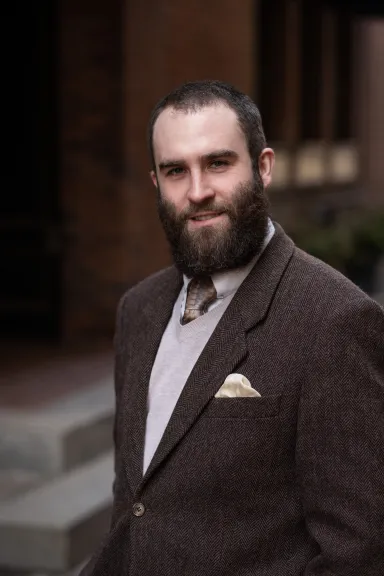By John Coleman
Vladimir Basenkov’s monograph A Path To The Hidden Rus (Apocatastasis Press, 2024) is a testimony to the resilience and faith of a determined and stubborn people. Regimes have come and gone, philosophical fads have ebbed and flowed, and the Old Believers remain. Dressed in their national clothing, featuring distinctive shawls for the women and giant beards for the men, these Christians have clung to their old rituals and devotions through thick and thin. As the author points out, this determination has paid off. After eighty years of communist persecution, followed by thirty years of capitalist siege and carpetbaggery, Edinovertsy parishes – as those Old Believer congregations in communion with the Russian Church are called – are flourishing.
In the Seventeenth Century the Russian Orthodox Church updated its ritual to better conform to that of the Greek Church. This produced a split in the Russian faith between the majority who accepted the changes, and a group which insisted on the old ways. This second group came to be called the “Old Believers.” Basenkov writes,
That which was native, sacred, preserved by generations of holy Russian people was recognized as incorrect. At the Moscow council in 1654, the Russian church antiquity of St. Sergius of Radonezh and Macarius of Moscow, a host of ascetics and holy hierarchs, was recognized as erroneous. There was a betrayal of the religious and national character, which in the seventeenth century were inextricably linked.
The ethnic grounding of these Russian Christians is hammered home by a quote in Basenkov’s book from Leonid Sevastyanov, head of the World Union Of Old Believers. He says,
The Old Believer culture holds within it the mentality of Orthodox Russia of the sixteenth century, when Russia was perceived by citizens as an ideologically independent and self-sufficient civilization, as the primary source of world outlook, as the land of God’s special presence. Old Russian Orthodoxy thought of Russia itself as a God-chosen Israel and the Third Rome; for the ancient Russian Orthodox man, Holy Russia is the primary source, and Greek Christianity is of secondary importance to him. It is no accident that the Russian metropolitans blessed the Patriarchs of Constantinople. And an Old Believer, by definition, cannot be manipulated from non-Russian centers. Any ideological center outside of Russia for the Old Believer is of secondary importance. For the Old Believer, Russia is the Holy and Promised Land where the destinies of the whole world are decided.
Basenkov’s text lays out the history of one strand of Old Believers, the Edinovertsy. As mentioned above, these Old Believers are they who have reconciled with the Orthodox Church.
Reading A Path To The Hidden Rus, I necessarily had to make comparisons with old time-y Christians in the West, what we might call “Fundamentalists” amongst the protestants and “Traditionalists” among the Catholics. In Basenkov’s book the Old Believers fit into Russia almost as neatly as the snow and the steppe. Their Western analogs, on the other hand, are idiosyncratic on a lucid day, and LARPy when their meds wear off or when their parents allow them online. Why is this?
Culture, liturgical continuity, and physical stability are our answers. The astute reader of Path To The Hidden Rus will learn how these Russian believers have fused their faith and nationality more successfully than Western Christians have. Some of this is for theological-psychological-philosophical reasons, and some of this has to do with historical and political developments.
When it comes to Orthodoxy in general, there is a refreshing acknowledgement of a people’s ethnos, that peoples are in fact peoples and not a herd of individuals. While Catholicism takes account of ethnos – indeed whatever fumes of ethnic Western cultures float about almost singly exist in Catholic venues – the universal imagination of Catholicism doesn’t especially dwell on national cultures as a specific sphere of evangelistic attention. Protestantism, being a total novelty severed from the history, liturgy, and theology of all pre-Modern Christianities, and being more or less the hobbyhorse of restless academics, is far too abstracted and individualistic to comprehend how vital culture is to evangelization.
The civil and cultural leaders of Enlightenment lands are pirates and traitors and strangers, and they have spent a century carefully kicking out the legs of ethnos in the West. Not content to “deconstruct” national affiliation, these strangers have imposed upon the chattel populations of the West economic, pop cultural, and civil orders which war on the very sanity and stability of individuals and families. Only a fool or a madman, for example, would ever agree to the tremendous liability of legal husbandhood in the West. On account of well over a century of this betrayal, itself on top of two centuries of Enlightened scorn, we can leave Western Christians off the hook for its blindspot of ethnos.
Yes, unlike in the forlorn West, Christianity for the Russians has not spun off into a gnostical collection of articles of faith to be assented to, propositions more or less severed from the liturgical life of the Church. Christianity for them is an earthy and near thing. This propinquity has been bolstered in recent decades by the marvelous symphonia and dialogue the Russian state and Church have agreed to. This too avoids the isolation, even the schizophrenia, Christians in the West must suffer, that ever-present antipathy of gospel values and social institutions we know day-to-day. What a difference it makes, not having occultists and perverts and pirates garrison one’s country! On account of this integrity the Old Believers endure and grow.
One point especially sticks with me from reading A Path To The Hidden Rus, namely the reconciliation of the Edinovertsy with the Russian Church. Its timing is what is striking. This schism, which had festered since the 17th Century, was not healed until… the winter of 1917-18! Leave it to people to not solve their problems until they’ve been conquered by foreign ideologues without and riven by civil war within. Let us take this sober notice to heart in our time, where so much of the erstwhile resistance to present cliques and agendas pointlessly splits and spits and anathematizes its fellows. May we solve our problems and divisions well before we face imminent slavery.
Basenkov is open that the reconciliation of the Old Believers with the Russian Church has not solved all the problems stemming from the original split. The mainstream Church could do more for its part.
The author writes,
There is no relevant provision in the Charter of the Russian Orthodox Church, no regulatory documents. They do not have their own bishop. Edinoverie parishes live by the rules of past centuries, some of which are outdated and require revision in connection with modern realities. The appearance of the Old Rite parishes in the dioceses of the Russian Orthodox Church is most often a result of grassroots efforts, with bishops evincing different attitudes toward this phenomenon. If the administrator of the diocese simply does not want it, an Edinoverie parish will not open. It is simple: Edinoverie is an unregulated initiative undermined by the lack of a clear legal status.
And problems cut both ways, with Old Believers showing too much of the Old Adam in them.
Basenkov writes,
At the same time, the love that has distinguished Christians, including the Old Believers of the past, is rapidly declining in the ranks of the carriers of ancient piety. Not wariness — open hostility, hatred, insults, frenzied aggression — all this has been committed by representatives of the soglasiya in real and virtual life. I do not want to extend a diagnosis to all the Old Believers, but the degree of negativity, as noted by experienced Edinovertsy and the «old guard» of the zealots themselves, has increased in recent years. You see less and less Gospel love.
A fair amount of this text is given to present happenings concerning the Old Believers. Recent events, such as President Vladimir Putin’s visit to an Old Believer bishop and the particulars of the Old Believers World Forum (both 2018), mark a renewed prominence of the movement in the larger Russian consciousness.
In conclusion, Vladimir Basenkov’s A Path To The Hidden Rus is an enlightening introduction to the ways and beliefs of Russian Orthodoxy’s Old Believers. Without papering over historical and present failures and idiosyncrasies on both sides which have led to alienation and misunderstanding, he sketches out the plucky devotion to liturgy, ancestors, and culture which have distinguished the Edinoverie these last three centuries.
Please enjoy the following sample from Vladimir Basenkov’s A Path To The Hidden Rus.
*
Getting to Know the Old Believers: How We Pray
Daily life and even the worldview of the Orthodox person have changed considerably since the time of Patriarch Nikon and Tsar Aleksey Mikhailovich’s liturgical «reforms.» We routinely hear from our pastors, and then from the laity echoing them: «What’s the difference, if at least there is love, and your conscience doesn’t reprove you…» and other variations on the theme of fulfilling this or that rule of the Church. Certainly, the two main commandments of our Lord Jesus Christ are expressed in these words: Love the Lord thy God with all thy heart (Mt. 22:37) and Love thy neighbour as thyself (Mt. 22:39).
Without this, all of our labors on religious soil turn into legalism, hypocrisy, and phariseeism. However, our pious ancestors — and before them no less than the pious Byzantines, heirs to the works of the holy hierarchs Basil the Great, John Chrysostom, and Gregory the Theologian — sought to «church» their entire lives and everything around them. It is no accident that the highest works of art, the most significant monuments of ancient Rus’that survive to this day have a clearly expressed religious character and are related directly to Church culture. Architecture, painting, literature… It is as if Russia was one continuous church. Let us not idealize it: There were times in the remote history of our country when many events happened that are quite bitter to remember today, but the presence of the Christian ideal as the orientation around which the life of state and society was ordered cannot be denied.
It seems those pious times have sunk into oblivion, and the conditions of modern life have nothing to do with that world… Services in city churches are no longer lengthy, and plangent, angelic singing and icons of the Rublyov school are found few and far between. But grains of these olden times, of that semi-monastic life have been preserved by the will of God, surviving until our day in the Edinoverie (Old Rite) parishes of the Russian Church.
Let the reader not be put off by the words «Edinoverie», «Old Rite parishes», «Orthodox Old Believers», or simply «Old Believers.» We are not talking about representatives of some independent Christian confession or, God forbid, about schismatics, but about the same ecclesial fullness that is found in the Russian Orthodox Church. Edinoverie arose as a movement of unification between the Old and New rites already by the end of the eighteenth century. Since that time, two rites, with unity of faith, have been active in the Russian Orthodox Church on equal footing. As Edinovertsy (those who belong to the Edinoverie) can freely visit New Rite parishes and participate in their Sacraments, so the parishioners of regular Orthodox churches can freely come to our «ancient» services and even become members of our communities if desired.
Edinovertsy approach the Divine services with trepidation. Having decided to go to such a church, as you approach, you will see parishioners hurrying to the service, like the heroes from some film about ancient Rus’. The men have unshaven and untrimmed beards, and are dressed in traditional untucked side-button high collar shirts, girded with a belt, and in pants and boots! Inside the church many wear floor-length black kaftans. The woman wear sarafans and opaque head coverings, which are fastened together in a specific way with a pin and cover the chest and back. Married women wear a povoinik under their head covering — knitted bonnets testifying to the wearer’s married state. In their hands, parishioners carry long leather (as a rule) chotki — lestovka, or «ladder» prayer rope — with triangles sewn on the end.
If you are planning to go to a Edinoverie parish and you don’t have special liturgical clothing, do not worry. Just remember the most important rule: clothing should be discreet and tidy, like in a regular Orthodox parish. Sleeves should be long and opaque; women must be dressed in a skirt; and headscarves are better held together with a safety pin.
As they enter the church, Edinovertsy make the Sign of the Cross with three bows from the waist, accompanied by a silent prayer:
«O God, be merciful to me, a sinner!» (bow).
«Thou hast created me, O Lord, have mercy upon me!» (bow).
«Countless times have I sinned, O Lord, have mercy and forgive me, a sinner!» (bow).
They take a special embroidered prayer mat — podruchnik — from a stack usually piled up inside the entrance. Later, as they make their prostrations, they lay their heads and hands on it, to preserve them in cleanliness. Men and women stand strictly on their own sides, on the right and left respectively. Walking around the church is best avoided. If there is enough time before the start of the service, you may sit on a bench by the wall. Edinoverie churches do not use electric lighting during services.
The space of the church is illuminated by lampadas and candles. Such dimness better disposes a man to prayer, not distracting his gaze. Vegetable oil is used in the lampadas, and the candles must be of wax. If you wish to light candles, it’s best to do so before the start of the service. In some Edinoverie churches, before lighting a candle, it is customary to make three bows with the above- mentioned prayer «O God, be merciful…», and also pray to the saint depicted on the icon.
Before the beginning of the service, the priest exits the altar and stands before the Royal Doors and reads the so-called Seven Bow Beginning. This is a special «preparatory» prayer that attunes us internally, calling us to gather ourselves. It is customary to read this prayer before leaving home and after returning from common prayer; in the most extreme cases it can even replace the morning and evening rule. It goes:
O God, be merciful to me, a sinner. (bow)
Thou hast created me, O Lord, have mercy upon me! (bow)
Countless times have I sinned, O Lord, have mercy and forgive me, a sinner! (bow)
It is truly meet to bless thee, O Theotokos, ever blessed and most pure and the Mother of our God; more honorable than the Cherubim and more glorious beyond compare than the Seraphim, without corruption thou gavest birth to God the Word; true Theotokos, thee do we magnify. (prostration, always)
Glory to the Father and to the Son and to the Holy Spirit! (bow)
Both now and ever and unto the ages of ages, amen! (bow)
Lord have mercy, Lord have mercy, Lord bless. (bow)
Lord Jesus Christ, Son of God, for the sake of the prayers of Thy Most Pure Mother, by the power of the precious and life-giving Cross, and my holy guardian angel, and for the sake of all the saints, have mercy and save me, a sinner, for Thou art good and lovest mankind. Amen.
(Prostration, without the Sign of the Cross).
After the dismissal «Lord Jesus Christ…» there are three more bows with the prayer «O God, be merciful…»
If you arrive at an Edinoverie church after the beginning of the service, say the «Beginning» yourself, and then carefully stand in a free place and join the common prayer. It should be noted here that parishioners stand in church with their arms folded over their chest. According to patristic interpretation, such a stance symbolizes the folding of angels’ wings, as they stand before the throne of God. And you will note, to your great surprise, that it’s much easier to endure the long services in this position.
Don’t be confused by the differences in some words and endings of the prayers from what you would normally hear in a Russian Orthodox parish. This is how they were everywhere in ancient Rus’ until the middle of the seventeenth century. For example, you might hear the unfamiliar «… i vo veki vekom» [3] or «And in the Holy Spirit, True Lord, the Giver of Life…» in the Nicene Creed.
If you come to the All-Night Vigil, you will note that the people sit at the Kathismas during Matins, rising only during the «Glory» to make the Sign of the Cross. There are opportunities to sit during the reading of the lessons, if they are given. The All-Night Vigil is long in Edinoverie churches; it can take from four to six hours. However, many newcomers have noticed an inexplicable ease and even invisible «help» in standing through this service.
Let us pay special attention to the kliros. There can be two klirosi — right and left, but usually there is only one. The kliros is led by a cantor, holding a pointer in his hands, with which he conducts the singing and points to important points in the hymns in the books, including when he hears if someone has slipped up. The cantor stands in the very center of the singers, who align around him in «battle formation.» As already mentioned, Edinoverie churches use znameny chant in the Divine services, which is the main type of ancient Russian singing, brought to Rus’ from Byzantium. The choir sings in unison; instead of notes, neumes are used to indicate voice intervals. Even just looking at them leads to an inevitable feeling of contact with something ancient and simultaneously eternal. Precisely such angelic singing was once heard by the ambassadors of the Equal-to-the-Apostles Prince Vladimir in Hagia Sophia in Constantinople. Znamenny chant is quite expansive, ascetic, unemotional, and collected. Of course, if you compare Byzantine and Russian znamenny singing, there are clear differences. The sound of our equivalent is free and loud, and the performance is quite stern, manifesting the national, northern color. Such singing helps the faithful to focus on prayer.
The prayers, the liturgical readings from the Gospel and Epistle, and the Six Psalms are all read in a special way. This reading style is called poglasitsa, in which words are pronounced in a kind of plainchant. Variations of poglasitsa are used for the Psalms, the Old Testament readings, the Epistle readings, the Gospel readings, the lessons, and so on. Reprints of seventeenth-century books are used in reading and singing. Sometimes you can see ancient books of past centuries in leather bindings on the analogion, with yellowed pages, ancient ornamentation, and illustrations. Before the beginning of a reading, every reader, as a rule, does a prostration on a podruchnik and receives a blessing from the priest.
The service ends the same way it began — with the Seven Bow Beginning. Then the priest reads the homily from the ambo, after which the community heads into the trapeza. In some parishes, they have preserved the wonderful tradition of processing to the trapeza accompanied by the singing of the troparion of the day or feast. Before the meal, all those assembled ceremoniously pray together. Trapeza may be accompanied by the reading of a soul-edifying book; on feast days, it is customary to sing ancient Russian spiritual verses.
Singing, as is well-known, is the soul of the people. It expresses the national character through its contents, which make you relive the events reflected in them. That is why it’s very important for Edinovertsy to sing Christian, rather than worldly, songs in times of rest. This is another echo of a bygone era and an expression of the desire to «draw near the Kingdom of God», Christianizing the entire space around you.
Our Thanks to The Postil for initially publishing this piece.
Link to Apocatastasis Press HERE.
















Recent Comments